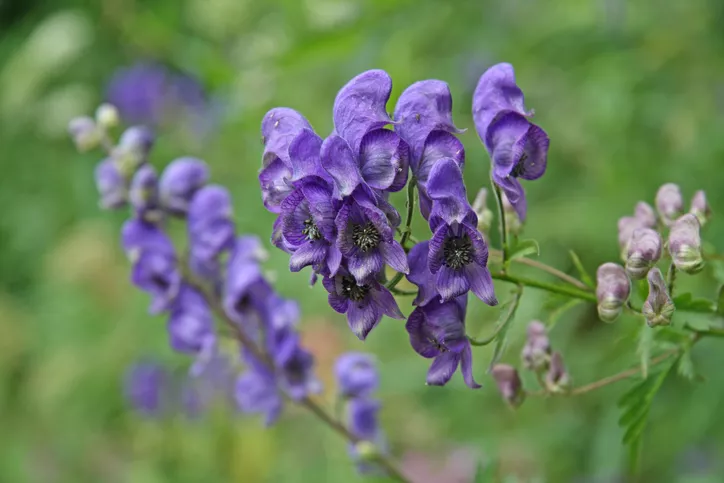- What are the characteristics of buttercup plants?
- Occurrence and peculiarities of buttercup plants
- flowers and leaves
- Ranunculus fruits
- ingredients
Ranunculaceae are found all over the world. Only in Antarctica there are no deposits. The family of these plants includes a whole range of species that differ in terms of size, flower color and other characteristics. There are some characteristics common to most members of this genus.
 Monkshood also belongs to the buttercup family
Monkshood also belongs to the buttercup family
What are the characteristics of buttercup plants?
As diverse as the many species in the family look, there are some traits that are common to at least many species. This applies in particular to:
- Happen
- Plant Peculiarities
- blossoms
- leaves
- fruit
- ingredients
Occurrence and peculiarities of buttercup plants
There are numerous types of buttercups, especially in the northern hemisphere.
Most representatives are perennial, but there are also annual species. Most are herbaceous plants, an exception is the climbing plant clematis.
flowers and leaves
Ranunculaceae are flowering plants and almost always hermaphrodite. Often the plant has only one circle of flowers. Some species develop flowers with nectar leaves that secrete nectar. The color and shape of the flowers vary greatly. The number of petals is also very different. Usually more than 20 stamens are present.
The number of petals ranges from four bracts, as found in clematis, to multiple bracts, such as in lesser celandine. The flowers of ranunculus or buttercup show five petals that look yellow and glossy.
The leaves are two or three lobed. They are notched or pinnate. Buttercup plants owe their name to the shape of the leaves, which are reminiscent of the foot of a rooster.
Ranunculus fruits
The representatives of the buttercup family very often bear follicles or colsiferous follicles. Only a few species develop nutlets as fruit.
ingredients
A special feature of the Ranunculaceae is that many members of the family have been found to have hormonal components.
Ranunculus plants used to play a major role in naturopathy. Even today, species such as monkshood, clematis, hellebore and anemone are among the medicinal plants. Ranunculus or buttercup, which grows in meadows, is only used in homeopathy.
tips
All species of the buttercup family are poisonous. They contain protoanemonin, which is intolerable for humans and animals. If buttercup plants are dried, the poison breaks down.